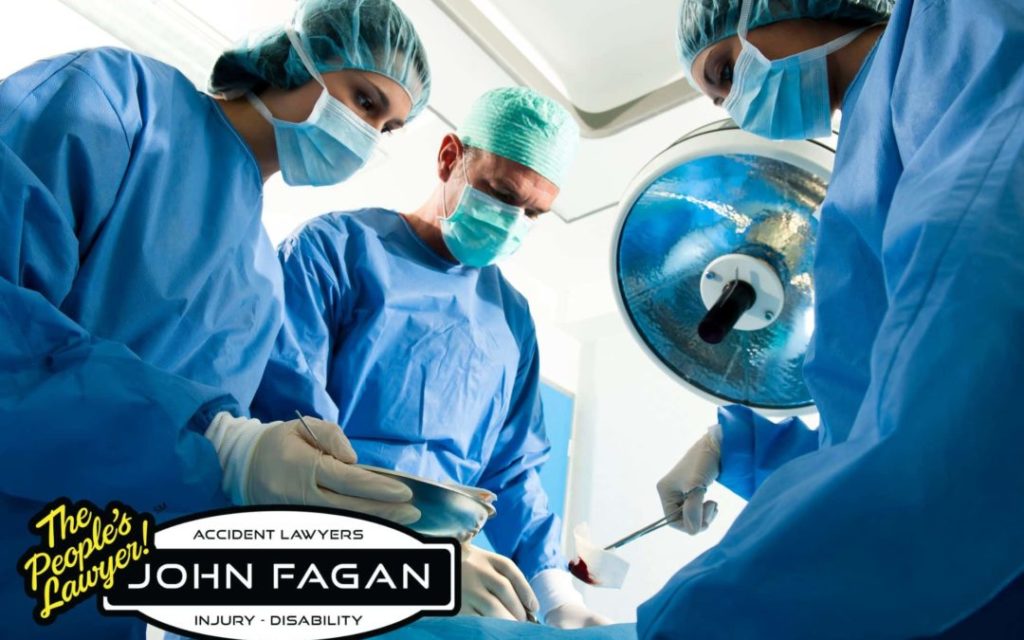By John Fagan***
Cholecystectomy problems, also known as gallbladder removal
surgery, often result in legal action. The most common complication is bowel
perforation which occurs when the surgeon places a trocar through the abdominal
wall or when scissors or a cautery penetrate the bowel and it is not detected
and repaired in surgery. This causes the bowel to leak intestinal bacteria into
the abdominal cavity which can lead to sepsis. 1 in 3 patients who die in a
hospital have sepsis. Sepsis must be treated aggressively to prevent multiorgan
failure and death. Bowel perforation represents a surgical emergency and
doctors have a limited window of opportunity to respond to the predicament,
usually with surgery and IV antibiotics with fluids.
Signs
of bowel perforation and sepsis
Within 5 days following the gallbladder removal, the patient
could experience the following:
1. worsening and merciless pain
2. fever
3. chills
4. labored breathing
5. abdominal bloating
6. nausea
7. vomiting
8. tachycardia (rapid heart rate)
9. tachypnea (rapid breathing)
10. hypotension (low blood pressure)
11. elevated or subnormal white blood cell count
12. bandemia (elevated immature white blood cells)
13. elevated liver chemistries
14. elevated serum creatinine levels
How do
I know if I have a case or not?
You first need to determine whether surgery was necessary.
If the patient could have been treated medically rather than surgically, the
surgeon is normally liable for the complications. Surgery is mandatory if the
patient’s gallbladder is inflamed (cholecystitis) usually due to gallstones
blocking the bile duct that leads to the small intestine.
Cholecystitis symptoms consist of fever, sweating, chills,
right-side abdominal pain, abdominal bloating, nausea, and vomiting. These are
the symptoms that indicate that the gallbladder needs to be removed. Physicians
typically look for Ortner’s Sign which is tenderness of the bottom ribs or Boas’s
Sign which is sensitivity below the shoulder. Diagnosis more often than not
includes abdominal ultrasonography, cholescintigraphy scans, blood testing, and
CT or MRI scans. The surgeon should always confirm that the gallbladder is
inflamed before proceeding to surgery.
Complication rates of gallbladder removal can be as high as
5 percent. Complications include bleeding, infection, bile duct injury, and bowel
perforation. Standard of care requires surgeons to respond rapidly to a patient
who has bowel perforation symptoms. When a patient does not recover swiftly
within 24 hours after surgery, the doctor should suspect bowel perforation.
When surgery goes wrong, the differential diagnosis process
after surgery is an important step in identifying malpractice. A physician must
identify ALL diagnoses that apply to the patient’s history and examination and
then prioritize those that present severe or life-threatening consequences.
Bowel perforation and sepsis nearly always trump the other diagnoses. The worst
diagnoses get treated first to prevent catastrophic consequences. The defendant
will likely argue that identifying bowel perforation as the problem was
difficult because the differential was extensive. You will have to question the
defendant about his or her plan, to illustrate that the doctor failed to
prioritize the most life-threatening diagnosis.
If you have substantial proof of substandard care, you need
to focus on whether sufficient damages are tied to that care. This could
include permanent intestinal injury that leads to a colostomy (a piece of the
colon is diverted to an artificial opening in the abdominal wall) or ileostomy
(same process as a colostomy except the ileum is diverted), amputation of
extremities, brain damage, and death.
My practice is devoted to helping accident and disability
victims in cases like these. If you need help with a legal problem or just want
information on gallbladder removal malpractice, you can always reach me at
1-855 FAGAN LAW or by email at John@JohnFagan.com.






